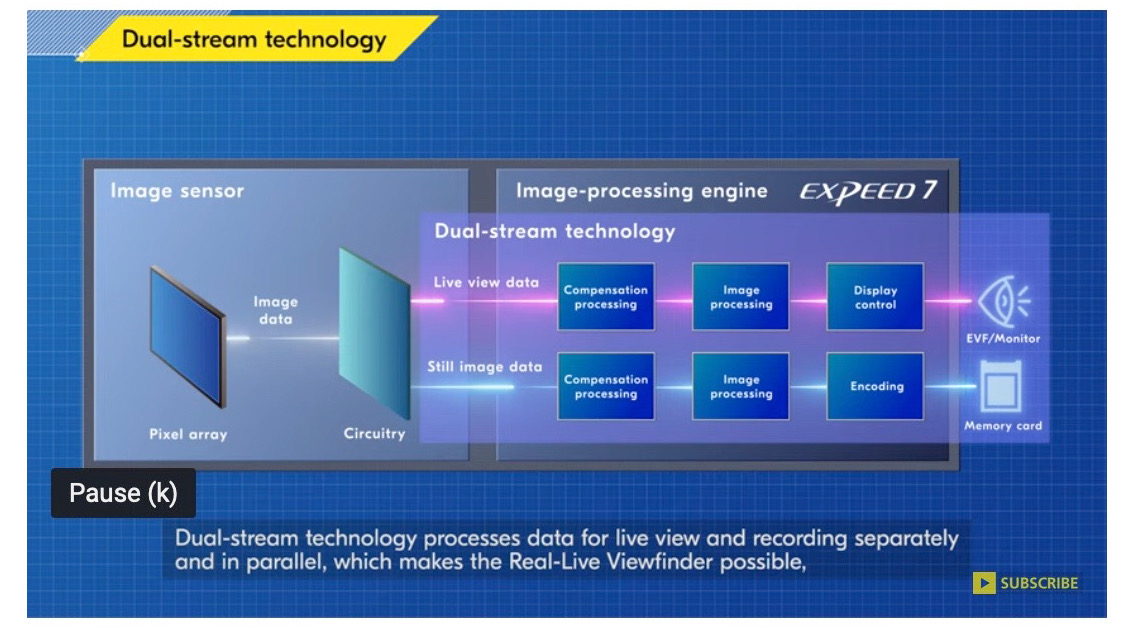Nikon still isn't fully explaining the technology inside the Z9, but rather offering simplified explanations that skip any real mention of technology. This week they released a 38 second video that had this illustration in it:

Many people have been speculating that the 52mp effective versus 45mp actual pixel count might be involved in the "live" EVF stream. If accurate, this illustration debunks that theory and suggests an alternative. Clearly, Nikon is saying that the BSI portion of the image sensor ("pixel array") is collecting and sending a single set of data to the underlying portion (which may be part the upside-down front side, part the stacked layer, but I'm guessing that the "circuitry" portion of the illustration references just the stacked layer).
As Sony suggested with the A9 and subsequent models, one primary purpose of the stacked layer is to act as a memory layer that data can be dumped into quickly. Think of it as DRAM for the image data, and you start to see what Nikon might be doing. I believe all Nikon has engineered in that layer is what would be generally called "dual-ported RAM." Such RAM allows multiple reads to occur at the same time from different processors.
Dual port RAM is used in most video RAM, and has been for some time. The interesting aspect here isn't that the stacked portion of the image sensor might allow dual-port reads of the collected data, but rather that the EXPEED7 chip has the ability to talk to multiple streams of data simultaneously, and at both ends (input and output) as well keeping the in between processing separate. This suggests multiple cores able to operate completely independently. While Nikon suggests that these streams are synced (due to the alignment in the illustration), they don't have to be and most likely aren't. In other words, the frame you see in the EVF is not the frame being saved to the card at the same moment.
The question people ought to be asking is this: why didn't Sony do any of this (dual stream, no mechanical shutter, etc.)? To me, it seems like Nikon has taken well-known ideas and simply implemented them first.
